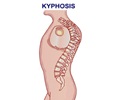Scientists in America have found a new form of ultrasound that may lead to an early prediction of bone loss, a hallmark of osteoporosis.
Scientists in America have found a new form of ultrasound that may lead to an early prediction of bone loss, a hallmark of osteoporosis.
Dr. Yi-Xian Qin, Director of the Orthopedic Bioengineering Research Laboratory at Stony Brook University, has revealed that the new technology, called Scanning Confocal Acoustic Navigation (SCAN), works by assessing multiple parameters of hard tissue like bone.The researcher, who worked on this project in collaboration with experts from the National Space Biomedical Research Institute (NSBRI) in Houston, has also revealed that the technology will first be used to assist astronauts during long-duration space flights.
He says that this has been planned because, just like the elderly on Earth, astronauts in space lose bone structure and quality.
According to him, SCAN is more advanced than existing ultrasound technology because it assesses bone parameters beyond mineral density, namely bone qualities such as strength, structure and stiffness.
He and his colleagues hope to develop a small, mobile SCAN device that would be easy for patients to use.
"SCAN uses non-invasive and non-destructive ultrasound to image bone, and the technology enables us to identify weak regions, as well as make a diagnosis and to assist in healing fractures. Because with SCAN we can assess bone qualities, such as stiffness, we can predict the risk of fracture, as quality of bone rather than density is more of a predictor of fracture risk," he says.
Advertisement
He reckons that the fracture rate could be high on the moon due to workload force, heavy spacesuits and gravity that is one-sixth that of earth's gravity.
Advertisement
His team are presently carrying out clinical evaluations of the diagnostic component of SCAN.
The researchers are also developing the therapeutic portion of the technology, with an eye on creating a device that effectively accelerates fracture healing by stimulating bone regeneration.
"We are trying to use ultrasound technology as a way to get an image of the fracture site. An integrated probe will directly shoot ultrasound into the region of the fracture. We hope this will result in effective acceleration of fracture healing," says Dr. Qin.
He believes that SCAN is potentially an ideal tool for health care providers on earth who care for an increasing elderly population.
The researcher has even revealed that the device in development would have much more capabilities and be smaller, easier, and cheaper to use than current X-ray based bone density measurement machines.
Source-ANI
ARU/L











